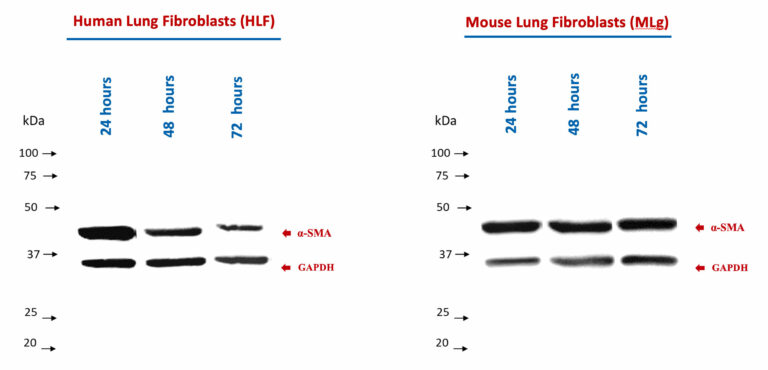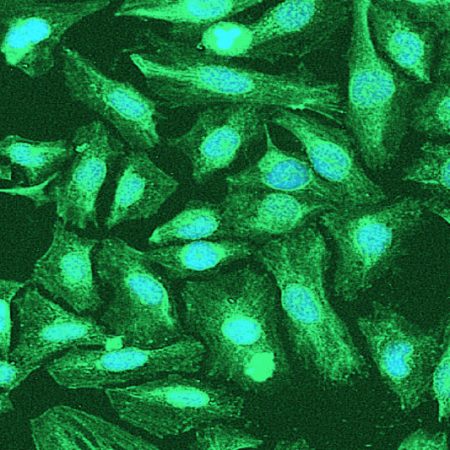Target Validation
Target validation ensures that the target is expressed and then confirms if the engagement of the target has any potential therapeutic benefit. It is a critical step in the early phase of drug development.
Our scientists at Cellomatics offer target validation assay design and support for a wide range of projects.
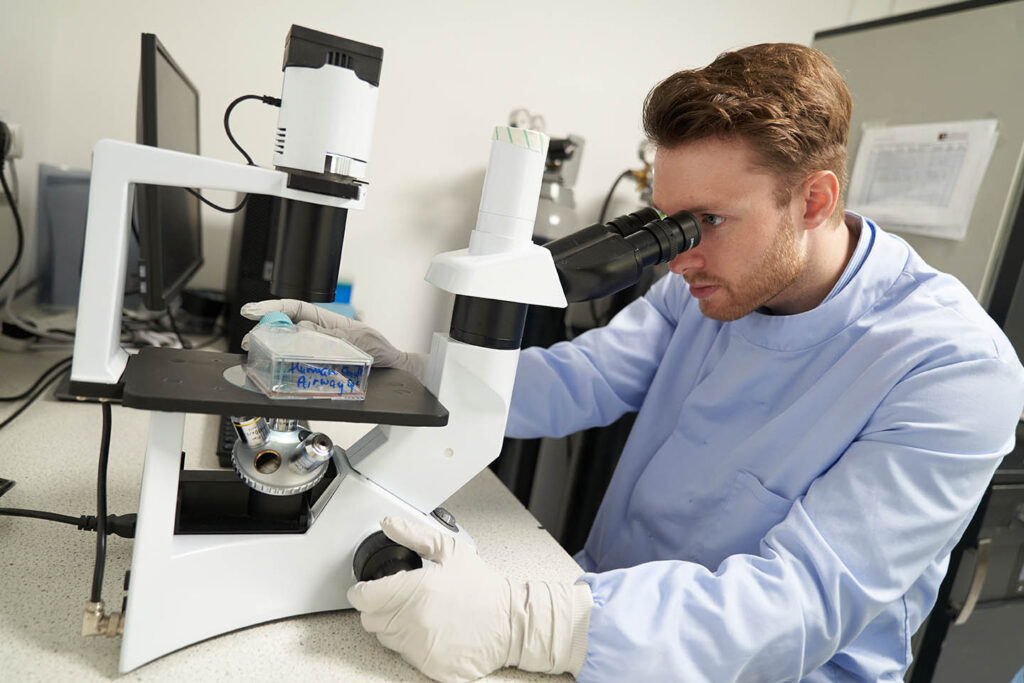
- Discovering a biomolecule of interest
- Investigating the expression of the molecular target within the tissue of interest
- Evaluating its potential as a target to understand if it is directly involved in the disease process
- Designing a bioassay to measure biological activity to verify if target modulation produces the desired therapeutic effect
- Constructing a high-throughput screen
- Performing screening to find hits and evaluating the hits
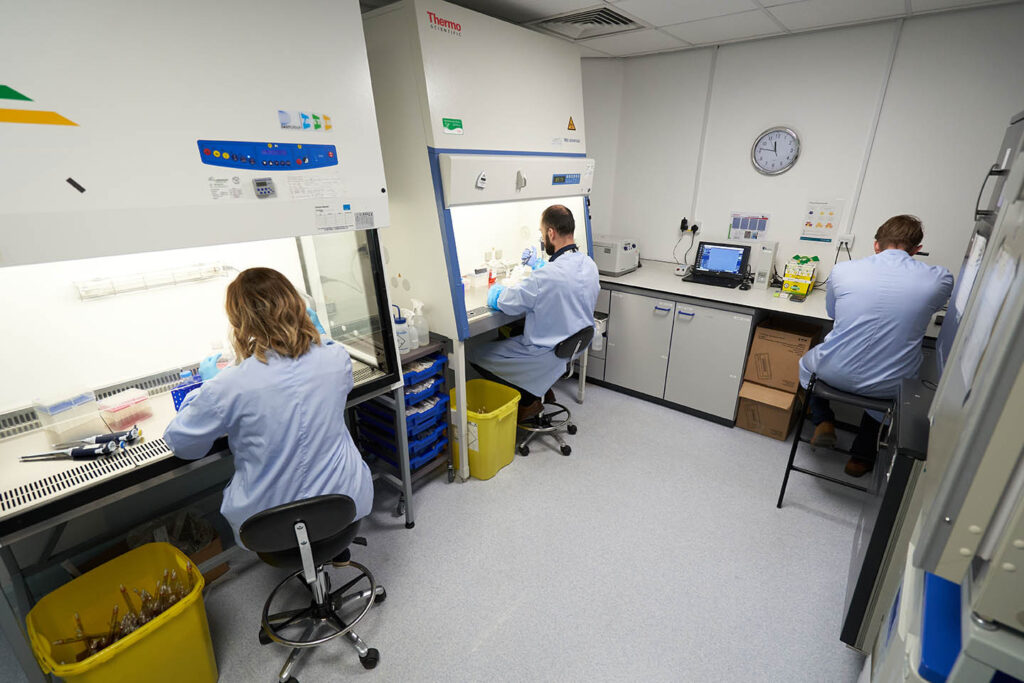
- We can offer support and assay design for protein and novel target expression in a range of normal and diseased tissue, including:
- IHC and novel marker assay development & co-localisation studies
- Phosphorylated marker assay development
- High-throughput target validation assay that represents biology
- Molecular level
- Screen enzyme inhibitors or activators
- Cellular Level
- Verify the involvement of the protein in the disease state (often use gene silencing siRNAs)
- Understand the protein pathways and interactions
Target Validation - Gene knockdown
Target Validation - expression
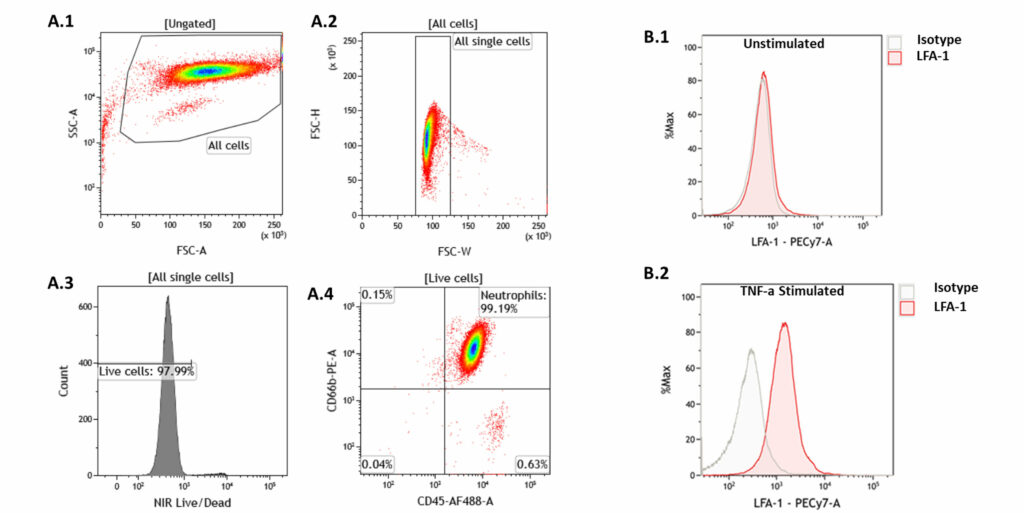
Purity of freshly isolated primary human neutrophils was analysed by FACS for surface markers (CD45 and CD66b). Data shows gating strategy for characterising the neutrophils. Neutrophils were stimulated with TNF-alpha for 4 hours. Differences in LFA-1 surface antigen expression between unstimulated (B.1) and stimulated (B.2) neutrophils was observed.
Request a consultation with Cellomatics Biosciences today
Our experienced team of in vitro laboratory scientists will work with you to understand your cell-based assay development needs and provide a bespoke project plan with a professional, flexible service and a fast turnaround time.
To request a consultation where we can discuss your exact requirements, please contact Cellomatics Biosciences.



